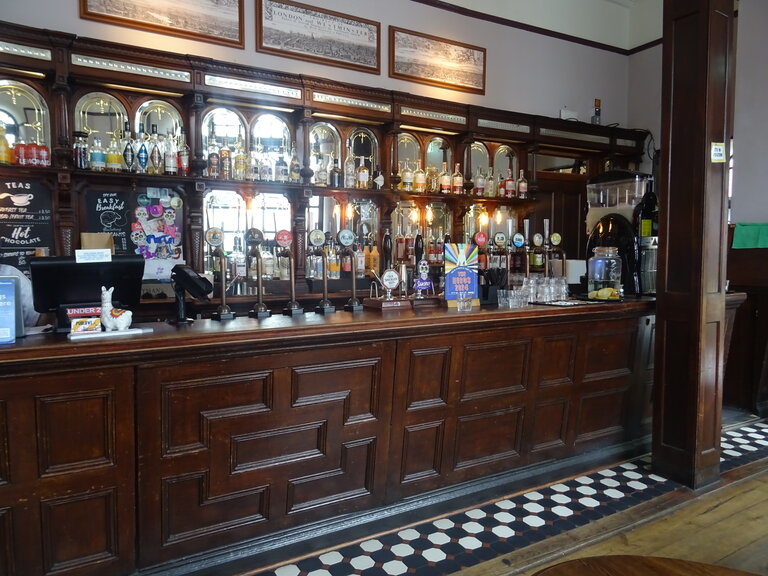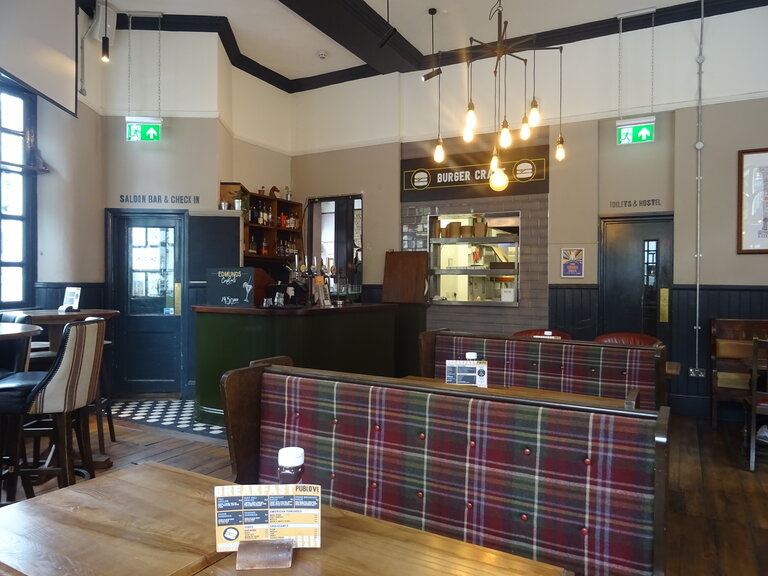White Ferry House
1a Sutherland Street,SW1V 4LD
This pub is not only a grade II listed building, it is also a One Star pub on the Campaign for Real Ale’s (CAMRA) National Inventory with an interior of special national historic interest, and the description is as follows: “A locals’ pub which forms a striking landmark in the streetscape and which no doubt doubled as a hotel when built in 1856. The irregular site gives rise to a three-quarter-round corner and a pair of interestingly shaped rooms inside. The public bar lies in the sharp corner and has plain, matchboard panelling to the walls and counter plus a plainish bar-back which seems to be inter-war. But the real star performer at this pub is the saloon (so named in the door glass) with its late-Victorian panelled bar counter and stunning bar-back. This is a beautiful eight-bay affair with two tiers of paired mirrors with orange-coloured detailing. Sitting on top of it are nine porcelain casks for spirits and other drinks: long disused these are named with their former contents which included Old Tom (a well-known gin), shrub (lemon or other juice with spirits such as rum), lovage (liquor made from the fruit and seeds of the eponymous plant) and aniseed. The windows contain much etched and cut glass. The lamps over the saloon bar counter are evidently imports, bearing the initials of the London Brighton & South Coast Railway and thus predating 1923. History round about: The name Pimlico is thought to come from an inn near Victoria Station or a brew served at the inn. The area was largely given over to market gardens but development began in earnest under Thomas Cubitt. At his death in 1855 his broad streets had been laid out and half the housing built.” The listing description is as follows: “Public house. Mid C19. Stucco. Roof not visible. 3 storeys, 3 windows wide to Sutherland Street and ¾ circular full height bay to sharp angle to right and return. Ground floor rusticated with pilasters between windows and doors which have semicircular or square heads. Some windows include Ipswich motif oriels; some with arched sub-lights. Ground floor cornice and fascia. Windows above architraved, square headed, corniced to first floor. Sashes, glazing bars. Modillion cornice to balustraded parapet. Interior not inspected.”
One interesting fact about Pimlico’s development was that, unlike nearby Belgravia where the pubs where hidden away in mews, in Pimlico they were on the main streets.
The White Ferry House featured on the Passport Required: Evening Crawl of Pimlico on 7 December 2011.




